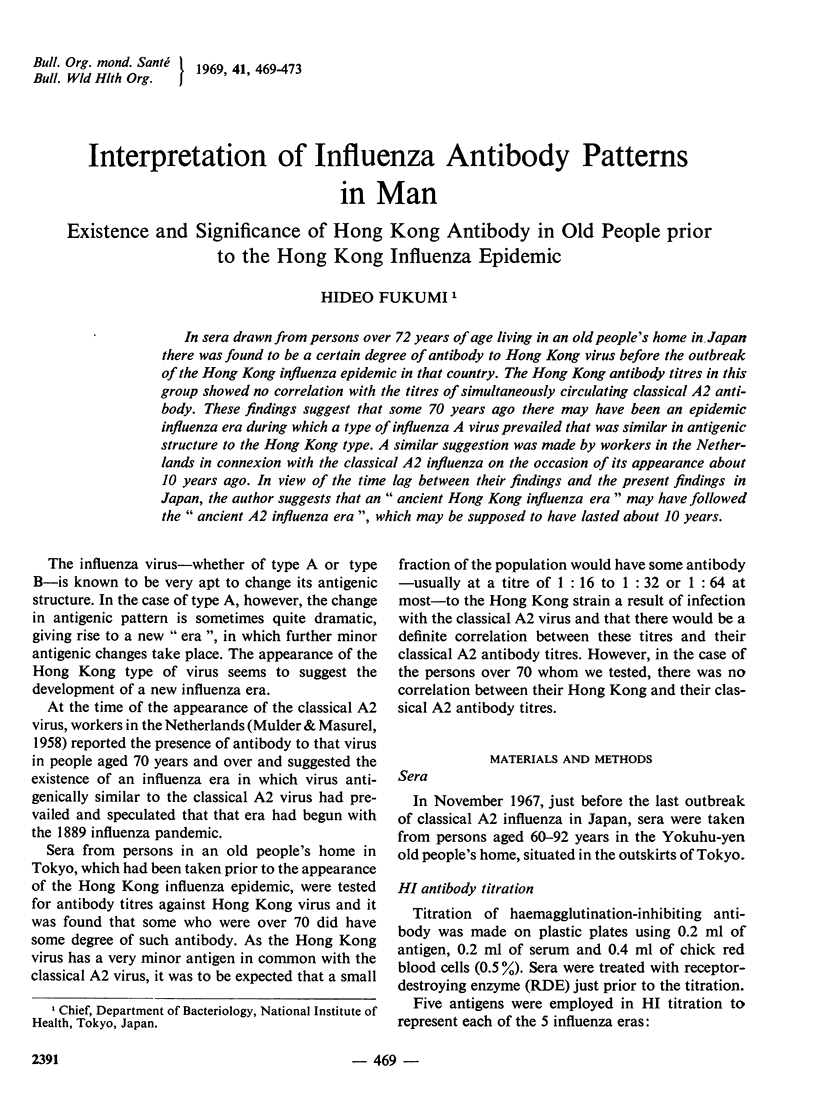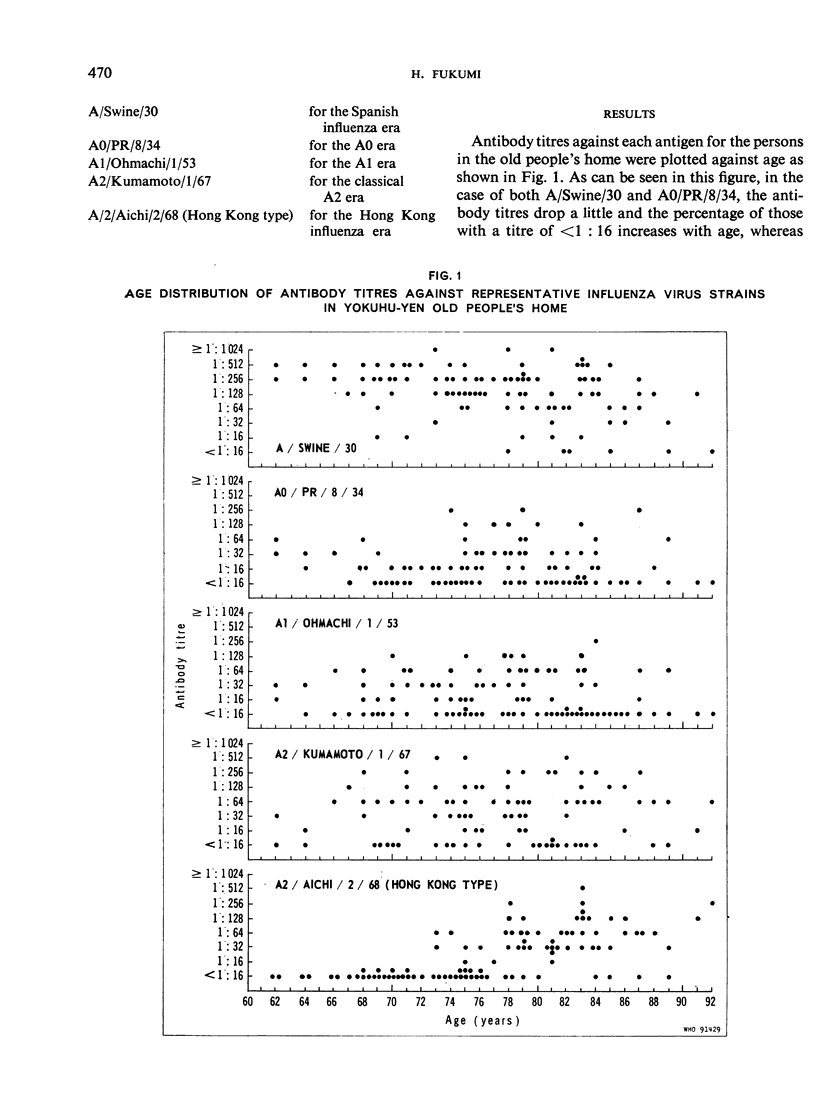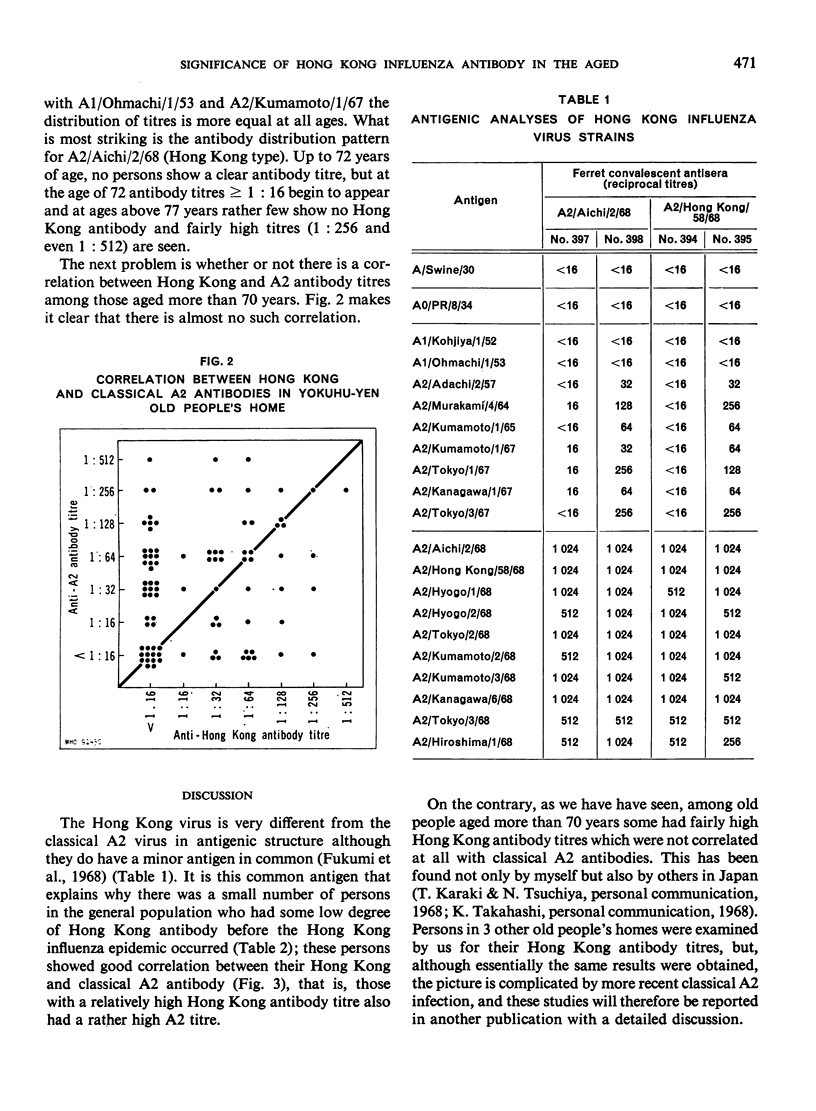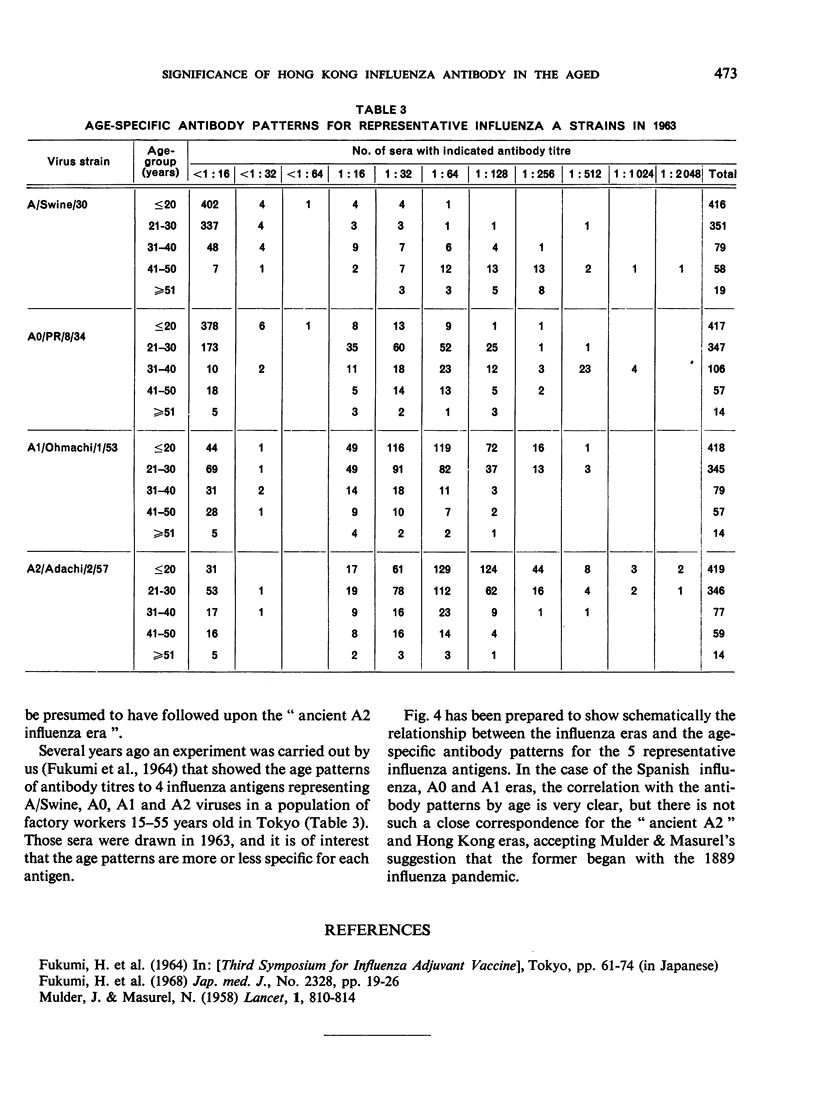Abstract
In sera drawn from persons over 72 years of age living in an old people's home in Japan there was found to be a certain degree of antibody to Hong Kong virus before the outbreak of the Hong Kong influenza epidemic in that country. The Hong Kong antibody titres in this group showed no correlation with the titres of simultaneously circulating classical A2 antibody. These findings suggest that some 70 years ago there may have been an epidemic influenza era during which a type of influenza A virus prevailed that was similar in antigenic structure to the Hong Kong type. A similar suggestion was made by workers in the Netherlands in connexion with the classical A2 influenza on the occasion of its appearance about 10 years ago. In view of the time lag between their findings and the present findings in Japan, the author suggests that an ”ancient Hong Kong influenza era” may have followed the ”ancient A2 influenza era”, which may be supposed to have lasted about 10 years.
Full text
PDF




Selected References
These references are in PubMed. This may not be the complete list of references from this article.
- MULDER J., MASUREL N. Pre-epidemic antibody against 1957 strain of Asiatic influenza in serum of older people living in the Netherlands. Lancet. 1958 Apr 19;1(7025):810–814. doi: 10.1016/s0140-6736(58)91738-0. [DOI] [PubMed] [Google Scholar]


